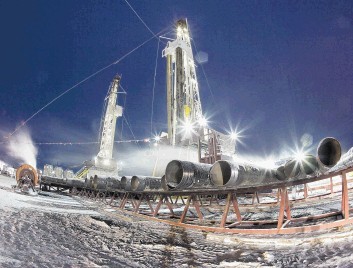
The builder of a ruptured Nexen Energy oil sands pipeline in Canada that caused one of North America’s largest oil-related land spills said on Monday it had followed the design plans it was given for the infrastructure.
Surerus Pipeline, a contractor based in Fort St. John in British Columbia, “had no involvement in this project after the completion, so whatever Nexen’s doing, they’re doing,” said Sean Surerus, vice president of the company, said in an interview.
“The project was completed to the standards. We were the installers. … We had no design capacity in the project.”
Nexen, a subsidiary of China’s CNOOC, discovered last week that the double-layer pipeline, built in 2014 south of Fort McMurray in Alberta, had leaked more than 31,500 barrels of emulsion – a mixture of bitumen, water and sand – onto an area of about 16,000 square meters.
Oil sands, as these naturally occurring deposits are called, are found in large quantities in Alberta, and require large amounts of energy and water to extract and process into heavy grade oil.
The Nexen leak was larger than the July 2010 rupture of an Enbridge pipeline which spilled an estimated 20,000 barrels of crude, with some reaching Michigan’s Kalamazoo River.
The latest spill dealt another blow to the oil sands industry, which is under fire from environmental groups and aboriginal communities for its carbon intensive production process.
Nexen took responsibility for the spill and apologized last week. But it has not determined when the leak – discovered by a contractor walking along the pipeline route – started or why a new state-of-the-art leak detection system failed.
The Alberta Energy Regulator is investigating the incident and has ordered Nexen to clean up the spill and test the surrounding area for contamination. It declined to say whether it has started questioning Surerus or the engineers who designed the pipeline.
The engineering firm, French-based ITP Interpipe, said it could not provide an immediate comment.
Martin Olszynski, a law professor at the University of Calgary, said Nexen could face fines of up to C$1 million ($769,408) under provincial environmental laws.
His estimate was based on a precedent set last year by Plains Midstream Canada, a subsidiary of Plains All American Pipeline, which agreed to pay C$1.3 million in fines to settle two Alberta spills in 2011 and 2012.
Recommended for you
